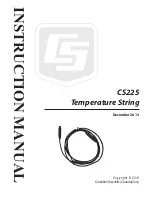
A.3.3 Text or String Parameters
A text parameter such as the CTEXT message (your Connect-TEXT
message) can hold most any ASCII character including UPPER and lower
case letters, numbers, spaces, and punctuation.
Some commands such as CONNECT require call signs as parameters. These
parameters are usually call signs, but may be any string of numbers
and at least one letter up to six characters in length. Some commands
such as CFROM (your "Connect FROM" list) have parameters which are
actually lists of call signs. You must separate multiple call signs
with either spaces or commas.
A.3.4 Commands With Two Arguments
Some packet commands accept separate arguments for each Radio Port.
For example, the Packet TXDELAY Command (Transmit Delay) must be
settable for both Radio ports. The default setting of TXDELAY is
"12/30" meaning that Radio Port 1 defaults to 120 msec as used on HF,
and Radio Port 2 defaults to 300 msec for VHF and UHF transceivers.
To change the "Port 1" value of a two argument command, type the
command name followed by the new argument. For example to set the
Port 1 value of TXDELAY to 30 for VHF packet, type the following at
the command prompt:
cmd:TXDELAY 30
TXDelay was 12/30
TXDelay now 30/30
To change the "Port 2" value of a two argument command, place a
forward slash "/" in front of the argument typed after the command
name. For example, to set the Port 2 value of TXDELAY to 12 for HF
packet, type the following at the command prompt:
cmd:TXDELAY /12
TXDelay was 30/30
TXDelay now 30/12
the arguments for both ports may be changed at the same time by typing
the desired arguments for both ports. For example, to return the
TXDELAY command to its default values, type the following:
cmd:TXDELAY 12/30
TXDelay was 30/12
TXDelay now 12/30
A.3.5 Using Commands Without Arguments
All commands that accept values or parameters may be typed without any
arguments to check their status.
Typing the only the command name "VHF" with no arguments displays:
cmd:VHF - Command with no arguments
Vhf OFF/ON - displays the present value
NOTE: The DISPLAY command shows you groups of related parameters.
1/93 A-3
Summary of Contents for PK-900
Page 14: ...The rest of this page is blank 3 93 TOC 10 ...
Page 86: ...This page is used to make the number of pages in this chapter an even number 1 93 4 44 ...
Page 114: ...The rest of this page is blank 1 93 6 16 ...
Page 136: ...The rest of this page is blank 1 93 7 22 ...
Page 142: ...The rest of this page is blank 1 93 8 6 ...
Page 178: ...The rest of this page is blank 3 93 11 22 ...
Page 296: ...3 93 6 ...
Page 297: ...APPENDIX B 1 93 B 1 ...
Page 298: ......
Page 299: ......
Page 300: ......
Page 301: ......
Page 302: ...APPENDIX B 1 93 B 2 ...
Page 303: ...APPENDIX B 1 93 B 3 ...
Page 304: ...APPENDIX B 1 93 B 4 ...
Page 305: ...APPENDIX C PK 900 Display Board PARTS PICTORIAL 1 93 C 1 ...
Page 306: ...PK 900 Main Board Logic Section PARTS PICTORIAL 1 93 C 2 APPENDIX C ...
Page 307: ...PK 900 Main Board Logic Section PARTS PICTORIAL 1 93 C 3 ...
Page 308: ...3 93 C 4 ...
Page 309: ......
Page 310: ......
Page 311: ......
Page 312: ...3 93 D 4 ...
Page 318: ...D ...
Page 319: ...D ...
Page 320: ...D ...
Page 321: ...D ...
Page 322: ...D 9 99 E 10 ...
Page 323: ...D ...
Page 326: ...PK 900 Gateway Option Supplement 2 This page intentionally left blank ...
Page 351: ...27 PK 900 Gateway Option Supplement This page intentionally left blank ...
Page 352: ...PK 900 Gateway Option Supplement 28 ...
Page 365: ...TNC GPS Upgrade Addendum 13 13 13 13 13 ...
Page 369: ......
Page 370: ...Figure B REMOVE VIA ...
Page 373: ...1 PK 900 PSK Sound Card Interface Upgrade Kit A 06265 Installation and Operation Manual ...
Page 383: ...11 ...
Page 384: ...12 ...
Page 389: ...17 Section 5 PK 900 PSK Sound Card Interface Schematic Diagrams ...
Page 392: ......
















































